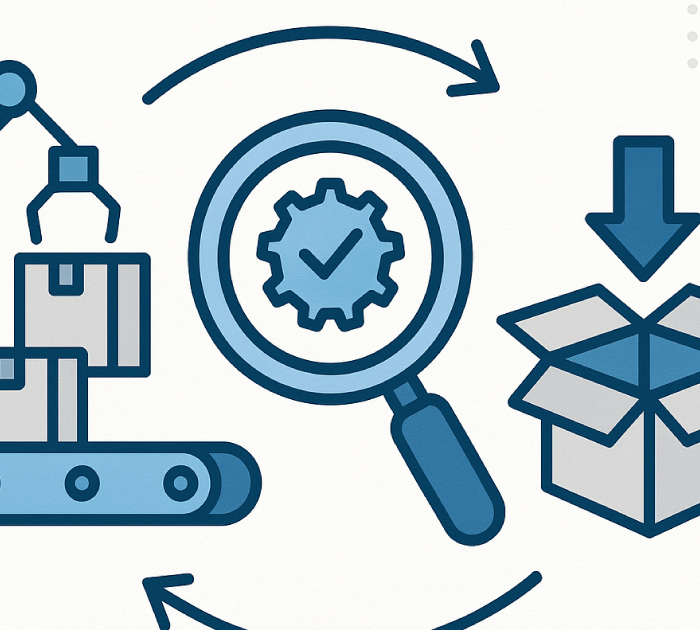For Operations Managers, dealing with unexpected downtime can feel like a nightmare. When just one piece of equipment breaks down, it can halt the entire production line, causing missed deadlines, unhappy customers, and rising costs. So, what’s the solution? Automated maintenance scheduling, powered by ERP systems. This blog highlights how automated maintenance scheduling can keep your equipment running smoothly, reducing downtime, and boosting productivity—all while keeping your operation on track and reducing stress.
The True Cost of Downtime
When equipment fails unexpectedly, the consequences ripple across your organization. It’s not just about repair costs. You also face:
- Lost production time: Every minute a machine sits idle, you’re losing money.
- Disrupted schedules: A single breakdown can throw off your entire production line, leading to bottlenecks and delays.
- Overtime costs: To recover lost time, your team may need to work overtime, increasing labor expenses.
- Customer dissatisfaction: Late deliveries and missed deadlines damage your reputation, pushing customers toward your competitors.
In short, downtime is costly—not only in direct expenses but also in the long-term impact on your business. How do you avoid it?
The Advantage of Automated Maintenance Scheduling
This is where automated maintenance scheduling steps in. Using an ERP system like SAP Business One integrated with Boyum IT’s BEAS Manufacturing, you can proactively manage maintenance.
Here’s how it works:
- Data-Driven Insights: ERP systems monitor equipment in real-time, predicting when maintenance is needed, so you can schedule it during low-demand times.
- Preventive Maintenance: Instead of waiting for breakdowns, automated scheduling allows for maintenance at optimal times, extending equipment life.
- Reduced Human Error: Manual systems leave room for oversight. Automated scheduling ensures maintenance tasks are completed on time, minimizing the risk of unexpected breakdowns.
How Automation Minimizes Downtime
Here’s a closer look at how automated maintenance scheduling helps reduce downtime:
Early Detection of Problems: ERP systems constantly track performance, identifying small issues before they become costly problems. When potential issues are spotted, maintenance is scheduled automatically, preventing downtime before it occurs.
Optimized Maintenance Timing: Scheduling maintenance during non-peak hours minimizes disruptions. No more rushing to fix machines in the middle of a busy shift—ERP systems ensure maintenance happens when it’s least disruptive.
Balanced Workload for Maintenance Teams: Automated scheduling spaces out tasks, preventing overload and ensuring efficient resource allocation.
Fewer Emergency Repairs: Emergency repairs are costly and stressful. Proactive, data-driven maintenance minimizes the need for last-minute fixes, keeping operations smooth and reducing labor costs.
Maximizing Uptime with Automation
Increasing uptime is about ensuring equipment stays operational for as long as possible. Here’s how automated maintenance scheduling contributes:
Avoiding Unnecessary Shutdowns: Regular maintenance keeps machines in top shape, reducing unexpected shutdowns and ensuring consistent production.
Prolonging Equipment Life: Routine maintenance extends equipment lifespan, saving you the cost of premature replacements. Automation guarantees maintenance happens at the right times.
Boosting Productivity: Fewer disruptions mean your team can hit production targets more consistently. With machines ready to run, your workflow stays smooth and efficient.
Why Operations Managers Rely on Automated Maintenance Scheduling
For Operations Managers, automated maintenance scheduling is a game-changer because it offers:
Peace of Mind: No more worrying about missed maintenance tasks or surprise breakdowns. The ERP system handles scheduling, ensuring everything runs smoothly.
Efficient Resource Use: By automating routine tasks, you free up your team to focus on higher-value work.
Enhanced Efficiency: Proper, timely maintenance reduces costly disruptions and keeps operations running smoothly.
Data-Driven Decision Making: With access to real-time data, you can make informed decisions about when to perform maintenance, maximizing efficiency.
Getting Started with Automated Maintenance Scheduling
Here’s how to begin reducing downtime and increasing uptime:
- Evaluate Your Current Maintenance Process: Are you reacting to issues as they arise, or do you have a preventive strategy in place?
- Choose an ERP System: Select an ERP solution with automated maintenance features—SAP Business One and Boyum IT’s BEAS Manufacturing are great options.
- Train Your Team: Ensure your team is comfortable with the ERP system and understands its role in maintenance scheduling.
- Monitor and Improve: Once the system is active, track your results. Are you seeing less downtime? Use this data to refine your process.
Conclusion: Keep Your Operations Running Smoothly
Automated maintenance scheduling is about more than just keeping machines operational—it’s about keeping your entire operation on track. By reducing downtime, increasing uptime, and ensuring maintenance happens at the right time, you can achieve a smoother workflow, happier customers, and a more productive team.
Looking to take control of your maintenance schedule? Fonseca Advisers can help implement the right ERP tools to get you there.






